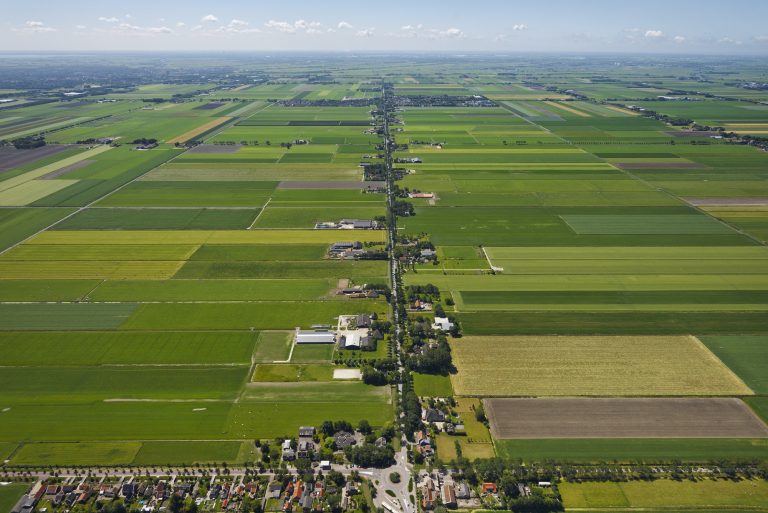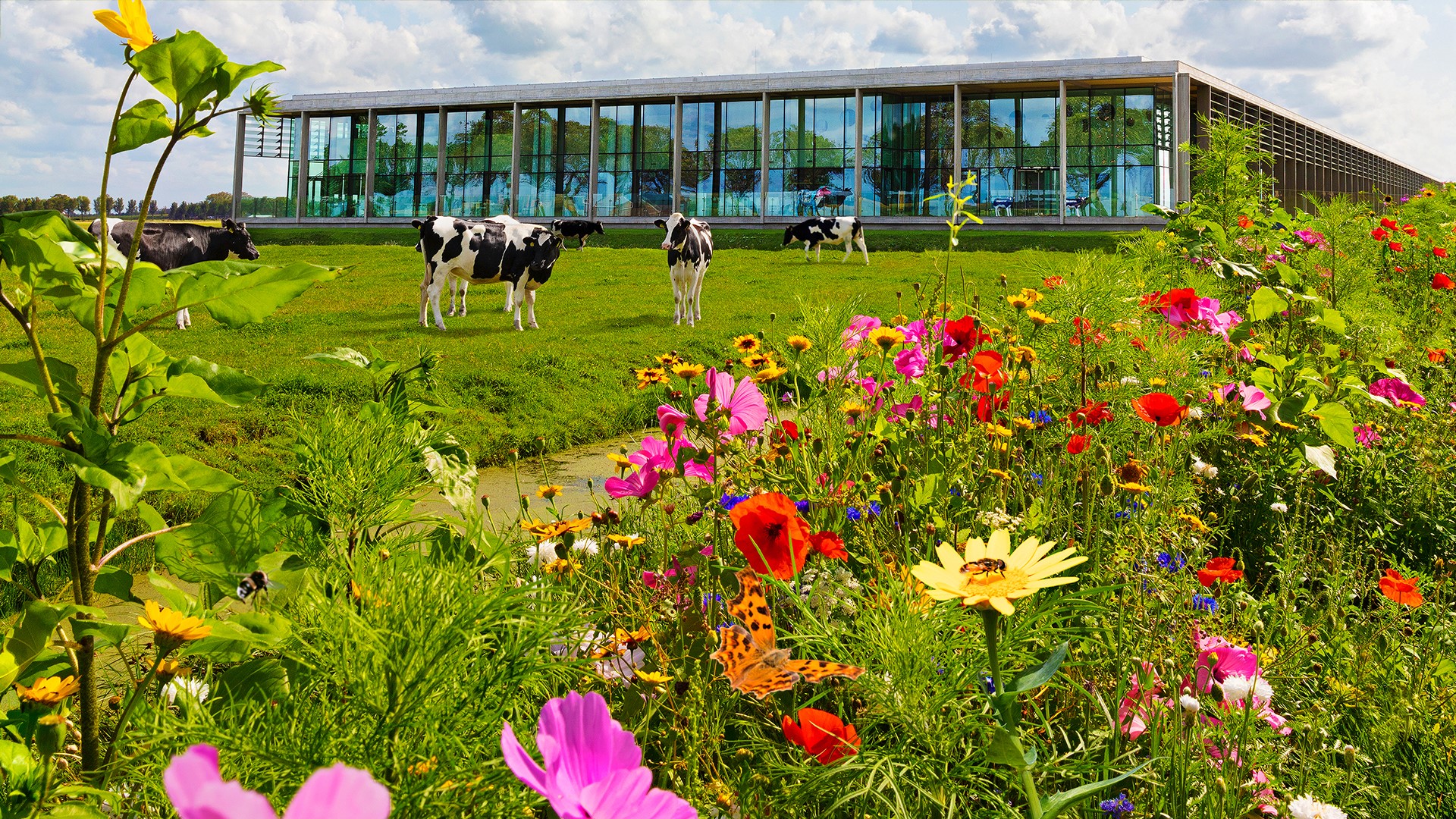
The Beemster Polder
Geometric pattern through unique parcelling
The Beemster Polder has become so famous because of its unique layout with road ditches and land parcels according to a geometric pattern of squares. During the Renaissance, this layout was considered absolute perfection for landscape design. Stolp farmhouses and magnificent country houses were also built here. The unique pattern of the polder is particularly visible from the air.
Fertile sea clay
Draining the Beemster proved to be a golden move, because the blue sea clay in the polder proved to be very fertile and gave the farmers high yields. Four metres below sea level, our cows still graze on this rich soil. We at CONO have the most delicious milk in the Netherlands to thank for that.
Origin of the Beemster
From inland sea to polder
Around 1200, the Beemster was an inland sea, connected to the Zuiderzee. This was due to the cultivation of the peat bogs in the centuries before and the flooding of this lower-lying land when the little river Bamestra (after which the region was named) burst its banks.
Daring during the golden age
In 1607, wealthy merchants from Amsterdam decided to have the area above Purmerend reclaimed and turned into farmland. This was an unprecedented and daring project for the Netherlands at that time. Jan Adriaenszoon Leeghwater, a millwright from De Rijp, was put in charge of the work. He had a ring canal dug and a dike constructed. With more than fifty windmills, the area was drained and in 1612, the great project was completed: the Beemster Polder was born. Almost 400 years later, the Beemster Polder was declared a UNESCO World Heritage Site.
World Heritage
What is a World Heritage Site?
There are many interesting places on earth that deserve attention and should be preserved for posterity. Think of the Sergengeti desert in Africa or the Acropolis in Greece. UNESCO maintains a list of World Heritage Sites in order to protect these unique places. In 1999, the Beemster Polder was added to this prestigious list.
Ten Dutch World Heritage Sites
In the Netherlands, 10 World Heritage Sites are currently named, including the Stelling van Amsterdam (a line of fortresses, some of which are located in the Beemster Polder), the Wadden Sea, the canals of Amsterdam and also Willemsstad on Curaçao.
Platform World Heritage Netherlands
In order to preserve and manage the world heritage in the Netherlands, De Beemster has established a platform. This platform promotes tourism in the area and also provides information and education about these important places in the Netherlands. Would you like to know more?
UNESCO
UNESCO, a United Nations organisation, has been working to protect the world's cultural and natural heritage since 1972. In December 1999, the Beemster polder also became an official world heritage site. UNESCO referred to the Beemster's perfectly straight parcelling of land and its history of origin as unique in the world.

